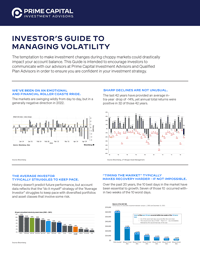This month, we discuss Federal Reserve Chair Jerome Powell’s recent Jackson Hole speech and what it signals about upcoming rate cuts, the bond market, and the overall economy. We explore why market confidence in the Fed matters so much for investors, examine the economic data driving policy decisions, and look at what rate cuts could mean for your investment portfolio.
Let’s start by understanding why the relationship between Fed credibility and market confidence is so important for how monetary policy actually works. The Federal Reserve sets short-term rates, longer-term interest rates that affect things like mortgages and corporate borrowing are determined by markets.
This means Fed policy only works when investors have confidence in the Fed’s ability to achieve its goals.
One way we can measure this confidence is through corporate bond yields. The yields on corporate bonds represent the interest rates investors require to lend to companies based on risk. The rates generally fall when the economy is healthy and corporate profits are growing. Today’s market environment suggests this confidence remains strong. Corporate bond yields have fallen and are near their lowest level in years.
Now let’s turn to what Powell actually said at Jackson Hole and what it tells us about Fed policy. Powell acknowledged the delicate balance the Fed must strike between controlling inflation and supporting employment. He noted that “risks to inflation are tilted to the upside” due to tariff impacts, but also emphasized “significant risks to employment to the downside.”
Recent economic reports illustrate this challenge. There are early signs that companies are beginning to pass on higher costs to consumers which could drive prices higher. At the same time, the latest jobs report was much weaker than expected. So, the Fed appears to be positioning for cautious rate cuts to balance these objectives.
What do potential rate cuts mean for your investment portfolio? Historically, falling policy rates provide support for bond prices, since existing bonds with higher yields become more valuable. The U.S. Aggregate Bond Index has generated a total return of 4.8% this year, partly reflecting these dynamics. Lower rates also typically reduce borrowing costs for companies which can drive growth. This can also support higher valuations, particularly for growth companies since lower interest rates mean their future profits are worth more today.
Ultimately, the benefits of lower rates need to be balanced with valuations that are quite high. The best way to do so is not to try to time the market, but by holding an asset allocation that is tailored to your financial goals.
We hope you found these insights helpful. If you would like to discuss these topics or your portfolio in more detail, please don’t hesitate to reach out. We look forward to speaking with you. You can reach Jason Noble at (843) 743-2926.
Advisory products and services offered by Investment Adviser Representatives through Prime Capital Investment Advisors, LLC (“PCIA”), a federally registered investment adviser. PCIA: 6201 College Blvd., Suite#150, Overland Park, KS 66211. PCIA doing business as Prime Capital Financial | Wealth | Retirement | Wellness.Copyright (c) 2025 Clearnomics, Inc. All rights reserved. The information contained herein has been obtained from sources believed to be reliable, but is not necessarily complete and its accuracy cannot be guaranteed. No representation or warranty, express or implied, is made as to the fairness, accuracy, completeness, or correctness of the information and opinions contained herein. The views and the other information provided are subject to change without notice. All reports posted on or via www.clearnomics.com or any affiliated websites, applications, or services are issued without regard to the specific investment objectives, financial situation, or particular needs of any specific recipient and are not to be construed as a solicitation or an offer to buy or sell any securities or related financial instruments. Past performance is not necessarily a guide to future results. Company fundamentals and earnings may be mentioned occasionally, but should not be construed as a recommendation to buy, sell, or hold the company’s stock. Predictions, forecasts, and estimates for any and all markets should not be construed as recommendations to buy, sell, or hold any security–including mutual funds, futures contracts, and exchange traded funds, or any similar instruments. The text, images, and other materials contained or displayed in this report are proprietary to Clearnomics, Inc. and constitute valuable intellectual property. All unauthorized reproduction or other use of material from Clearnomics, Inc. shall be deemed willful infringement(s) of this copyright and other proprietary and intellectual property rights, including but not limited to, rights of privacy. Clearnomics, Inc. expressly reserves all rights in connection with its intellectual property, including without limitation the right to block the transfer of its products and services and/or to track usage thereof, through electronic tracking technology, and all other lawful means, now known or hereafter devised. Clearnomics, Inc. reserves the right, without further notice, to pursue to the fullest extent allowed by the law any and all criminal and civil remedies for the violation of its rights.






